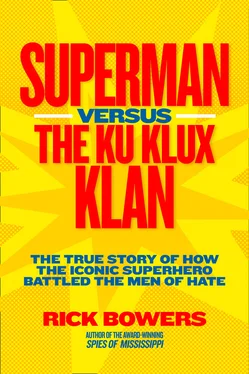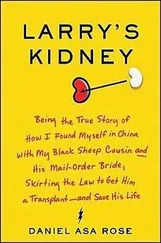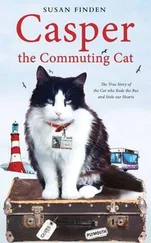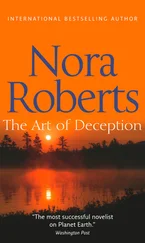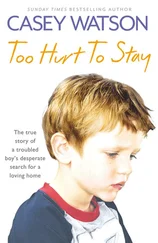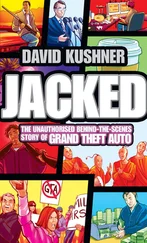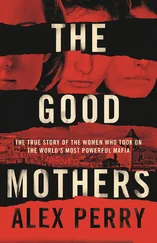Richard Bowers - Superman versus the Ku Klux Klan - The True Story of How the Iconic Superhero Battled the Men of Hate
Здесь есть возможность читать онлайн «Richard Bowers - Superman versus the Ku Klux Klan - The True Story of How the Iconic Superhero Battled the Men of Hate» — ознакомительный отрывок электронной книги совершенно бесплатно, а после прочтения отрывка купить полную версию. В некоторых случаях можно слушать аудио, скачать через торрент в формате fb2 и присутствует краткое содержание. Жанр: unrecognised, на английском языке. Описание произведения, (предисловие) а так же отзывы посетителей доступны на портале библиотеки ЛибКат.
- Название:Superman versus the Ku Klux Klan: The True Story of How the Iconic Superhero Battled the Men of Hate
- Автор:
- Жанр:
- Год:неизвестен
- ISBN:нет данных
- Рейтинг книги:4 / 5. Голосов: 1
-
Избранное:Добавить в избранное
- Отзывы:
-
Ваша оценка:
- 80
- 1
- 2
- 3
- 4
- 5
Superman versus the Ku Klux Klan: The True Story of How the Iconic Superhero Battled the Men of Hate: краткое содержание, описание и аннотация
Предлагаем к чтению аннотацию, описание, краткое содержание или предисловие (зависит от того, что написал сам автор книги «Superman versus the Ku Klux Klan: The True Story of How the Iconic Superhero Battled the Men of Hate»). Если вы не нашли необходимую информацию о книге — напишите в комментариях, мы постараемся отыскать её.
Superman versus the Ku Klux Klan: The True Story of How the Iconic Superhero Battled the Men of Hate — читать онлайн ознакомительный отрывок
Ниже представлен текст книги, разбитый по страницам. Система сохранения места последней прочитанной страницы, позволяет с удобством читать онлайн бесплатно книгу «Superman versus the Ku Klux Klan: The True Story of How the Iconic Superhero Battled the Men of Hate», без необходимости каждый раз заново искать на чём Вы остановились. Поставьте закладку, и сможете в любой момент перейти на страницу, на которой закончили чтение.
Интервал:
Закладка:

*PART ONE *
THE BIRTH OF SUPERMAN
In the early 1930s newspaper headlines told of the hardships of the Great Depression. Americans fortunate enough to have jobs fretted about losing them. Those who had lost their jobs often turned to breadlines and soup kitchens just to keep from starving. In Europe the desperate economic climate had given rise to fascist leaders who preached the superiority of a master race and advocated the elimination of all “inferior” races. In a tight-knit Jewish enclave in Cleveland, Ohio, a shy teenager was working on a solution. To his mind, the world needed a superhero.
* CHAPTER 1 *
KOSHER DELIS & DISTANT GALAXIES
WALKING DOWN THE HALLWAY of Glenville High, Jerry Siegel braced for another day of disappointment. It was only 8:30 in the morning, and the 17-year-old science fiction aficionado was already counting the hours to the final bell. The pretty girl with the long, brown hair and flashing eyes would no doubt turn away from his glances. The student editor of the award-winning school newspaper, the Torch , would probably reject his latest story idea. The swaggering guys on the football team and the cliquish cheerleaders on their arms would not even acknowledge his existence. At least after school Jerry could hustle to his house at 10622 Kimberly Avenue, bound up to his hideaway in the attic, pick up a science fiction magazine, and lose himself in a fantasy world of mad scientists and rampaging monsters, space explorers and alien invaders, time travelers and spectral beings.
Jerry loved science fiction. Ever since he was a kid he had buried himself in a new breed of magazines with titles like Weird Tales and Amazing Stories . Full of dense print and crude illustrations, these simple, low-budget publications were magic to him. The smudged type on that thin paper told stories of intergalactic warfare, futuristic civilizations, and brilliant new technologies that promised a brighter and better world.
These astounding tales were attracting a growing audience of teenage fans across the country. They referred to their magazines as zines and shared their reactions and ideas through the mail. For Jerry, zines were the ultimate escape from his humdrum existence at school and the tension at home with his mother, who constantly babied him and worried that he was too much of a dreamer to make it in a harsh world.
Jerry had to admit that his future did not look all that bright. Because he lacked the grades and the money to go to college, the world ahead often seemed as bleak as the coldest, darkest reaches of outer space.
Jerry Siegel was the youngest of six children born to Mitchell and Sarah Siegel. Like so many other Jewish immigrants, Mitchell and Sarah had fled persecution in Europe to build a new life in America. After arriving from Lithuania, the couple had changed their name from Segalovich to fit in more easily in their adopted homeland. At first Mitchell worked as a sign painter and dreamed of becoming an artist. But with a growing family to support, jobs scarce, and money tight, he gave up his dream of painting beautiful works of art. Instead he opened a haberdashery, or secondhand-clothing store, near the factories in the old Jewish ghetto of Cleveland. Mitchell worked long hours, saved his money, and eventually moved the family out of the ghetto and into a comfortable, three-story, wood-frame house in Glenville, a close-knit neighborhood of nice homes, spacious front porches, and big backyards. Set amid rambling green hills and gurgling streams that meandered to Lake Erie, Glenville was the American dream come true for its tens of thousands of Jewish residents.
Glenville was also a protective cocoon for those residents—a safe haven from the prejudice that lurked just outside its borders. Sure, there were plenty of good, hardworking Christian people out there, but some Christians called Jews insulting names like kike and hebe and instructed their children to stay away from those kinds of kids. The classifieds in the Cleveland Plain Dealer were filled with job ads bluntly stating “No Jews Need Apply.” Country clubs in exclusive neighborhoods refused to accept Jewish members. There were even hate groups that called for the kinds of mass-removal programs that the Siegels thought they had escaped when they left Europe. In fact, Jews could simply turn on their radios to hear the Radio Priest, Father Charles Coughlin, spew anti-Semitic tirades from the National Shrine of the Little Flower Parish in Royal Oak, Michigan, just 180 miles from Glenville. A frequent speaker at mass rallies in Cleveland, Coughlin organized his most loyal followers into Christian Front organizations to oppose equality for Jewish Americans.
As the Great Depression wreaked economic havoc on the nation, another frightening fringe organization was becoming more and more active. With unemployment at a record high and clashes between striking workers and employers turning into bloody melees, the Ku Klux Klan (KKK) sought to exploit public fear. Preaching a gospel of racism and religious intolerance, the KKK called upon white protestant men to band together to fight the Jew’s demand for social acceptance, the Negro’s plea for just treatment, and the immigrant’s call for decent jobs and fair pay. To keep up with the times, this secret society of hooded vigilantes had expanded its traditional hate list from Negroes, Jews, and Catholics to include union organizers, liberal politicians, civil rights advocates, crusading journalists, and supporters of the New Deal—President Franklin Roosevelt’s program to restore the economy by putting people to work. As tensions rose, new recruits came forward to join the nation’s most militant defender of white protestant rule. Although the KKK recruited only members who were white and protestant, it boasted of standing for the principle of “100 percent Americanism.”
On summer days the streets of Glenville buzzed with kids riding bikes, skipping rope, and playing stickball or hide-and-seek. On summer evenings teenage boys and girls walked hand in hand down the sidewalks, and gaggles of kids hung out on spacious front porches, told jokes, flirted, and talked about the future. Throughout the week pedestrians flowed down lively East 105th Street, where Solomon’s Delicatessen piled corned beef and pastrami high on fresh rye bread and Old World restaurants served classic European fare like brisket, cheese blintzes, matzo ball soup, and lox and bagels. On Saturdays, worshippers flocked to more than 25 synagogues, the men wearing the traditional yarmulke to cover their heads and the women dressed in the fashions of the day. The jewel of Glenville was the grand Jewish Center of Anshe Emeth (a synagogue) at East 105th and Grantwood Avenue, a modern building with a sculpture of the Star of David crowning its roof. It was the central gathering place for the community—the place to go to shoot basketball, to swim laps, or to take classes on subjects ranging from Hebrew tradition to American culture. By the early 1930s more than half of Cleveland’s Jewish population lived in Glenville, and more than 80 percent of the 1,600 kids at Glenville High were Jewish.
JERRY SIEGEL WAS DIFFERENT from most of the other kids in Glenville. While they were playing ball in the street, shooting hoops at the community center, or shopping on 105th Street, Jerry was holed up in the attic with his precious zines. He also loved to take in the movies at the Crown Theater, just a couple blocks from his house, or at the red-carpeted and balconied Uptown Theatre farther up 105th. Scrunched in his seat with a sack of popcorn in his lap and his eyes fixed on the screen, he marveled as the dashing actor Douglas Fairbanks donned a black cape and mask to become the leaping, lunging, sword-wielding Zorro. Jerry admired Fairbanks and all the other leading men—those strong, fearless, valiant he-man characters who took care of the bad guys and took care of the gorgeous women too. Jerry worshipped Clark Gable and Kent Taylor, whose names he would later combine to form Clark Kent.
Читать дальшеИнтервал:
Закладка:
Похожие книги на «Superman versus the Ku Klux Klan: The True Story of How the Iconic Superhero Battled the Men of Hate»
Представляем Вашему вниманию похожие книги на «Superman versus the Ku Klux Klan: The True Story of How the Iconic Superhero Battled the Men of Hate» списком для выбора. Мы отобрали схожую по названию и смыслу литературу в надежде предоставить читателям больше вариантов отыскать новые, интересные, ещё непрочитанные произведения.
Обсуждение, отзывы о книге «Superman versus the Ku Klux Klan: The True Story of How the Iconic Superhero Battled the Men of Hate» и просто собственные мнения читателей. Оставьте ваши комментарии, напишите, что Вы думаете о произведении, его смысле или главных героях. Укажите что конкретно понравилось, а что нет, и почему Вы так считаете.
